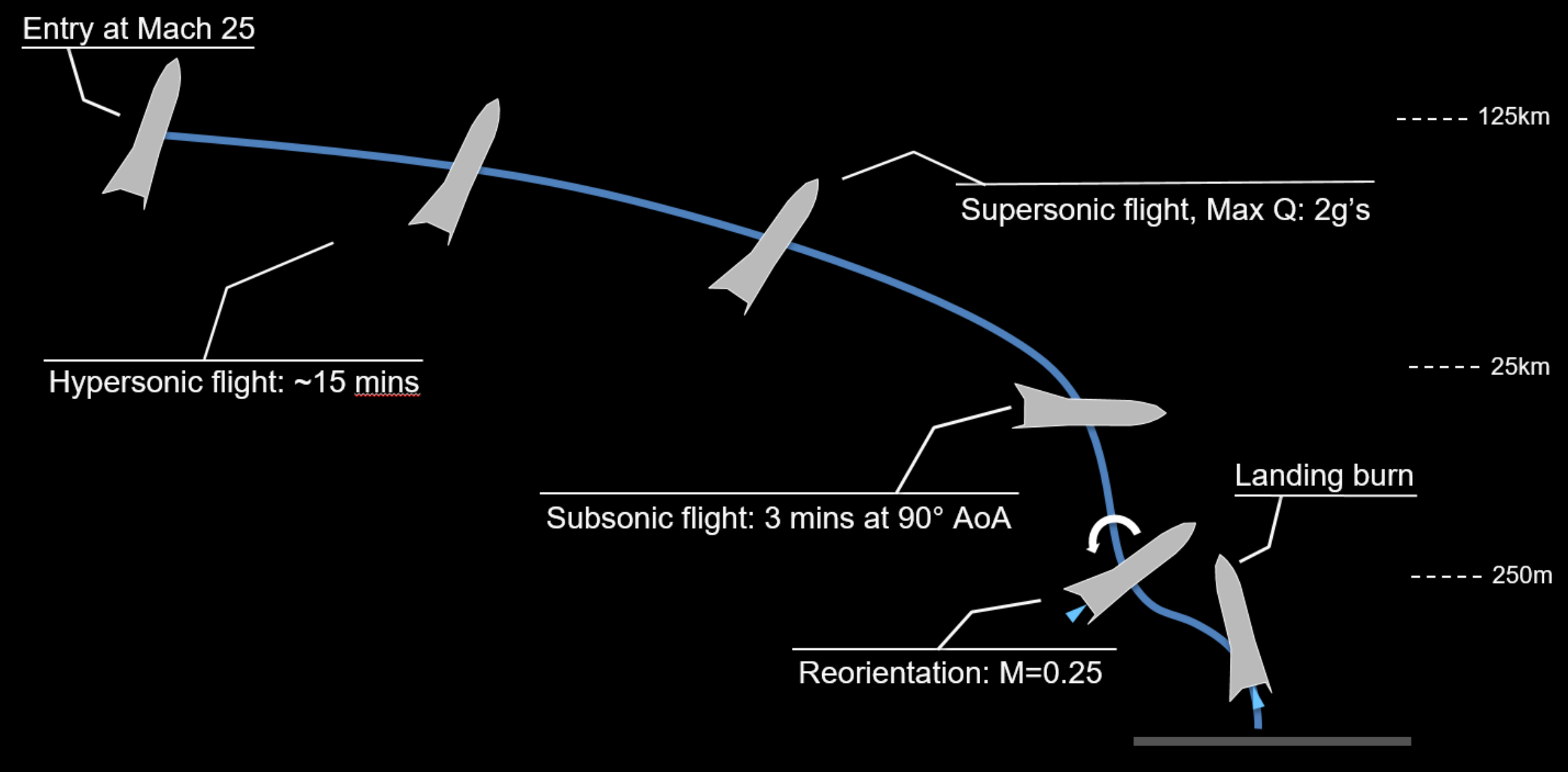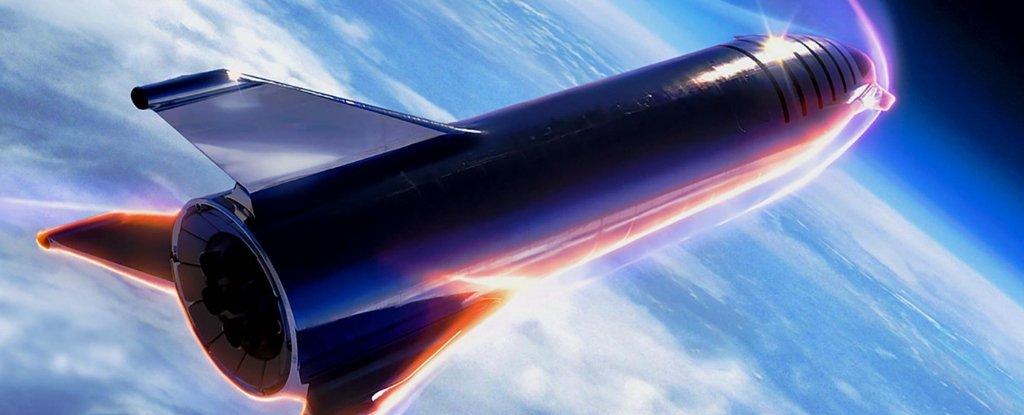Why does the SpaceX Starship flip and land instead of landing vertically?

Saturday, December 4, 2021 | Chimniii Desk
Key Highlights
- The horizontal to vertical flip manoeuvre and subsequent landing is a signature manoeuvre of all Starship rockets.
- Have you ever wondered why SpaceX uses the horizontal then flip landing manoeuvre for starships rather than vertical landings as they do with the Falcon 9s?What is the point of attempting this difficult move when they have mastered the straightforward vertical landing?
- Spacex believes that this horizontal gliding and then flip manoeuvre landing has significant potential.
- The primary disadvantage of the rapid reorientation prior to landing is that it causes fuel to slosh around in the nearly empty tanks, making it difficult to feed the engines reliably.
- If they are successful in sticking the landing following this flip manoeuvre, it will reduce the cost, increase the payload capacity, and improve the heat resistance of starship rockets.
Advertisement

Belly Flop manoever
The horizontal to vertical flip manoeuvre and subsequent landing is a signature manoeuvre of all Starship rockets. Have you ever wondered why SpaceX uses the horizontal then flip landing manoeuvre for starships rather than vertical landings as they do with the Falcon 9s?
What is the point of attempting this difficult move when they have mastered the straightforward vertical landing? We will examine the reasons for spacex's decision in this article. If you're on the highway in a car, open the window and place your hand in the air stream.
Put it sideways first, and then your palm into the wind. Experiment with various positions. You'll notice that the force the wind applies to your hand increases linearly with the exposed surface area. Thus, the more surface area an object exposes to the wind, the more force it will encounter.
This is referred to as air friction or air drag. The more air drag a free-falling object encounters in the direction of its fall, the slower its terminal velocity will be. When a falcon-9 makes a traditional vertical landing, it exposes significantly less surface area than when a starship makes a belly landing.
As a result of falling on its belly, a starship rocket achieves a lower terminal velocity and thus slows down more easily. Additionally, slowing down significantly aids in landing.
Advertisement

Keep in mind that the starship will travel at a much faster speed than the Falcon 9 or Super Heavy booster. This is because it has achieved orbital velocity, which is something the boosters never achieve.
As such, it must significantly slow down! Now, in theory, a starship could perform a deorbit burn over the landing site, slow down with more fuel-burning thrust in the atmosphere, and land similarly to Falcon 9.
However, the sooner you begin flipping and burning, the more propellant and oxidizer you will require. This implies that you must have carried more throughout the journey, implying that you had less payload weight available.
Each kilogramme of propellant or oxidizer on the starship stage reduces the payload by one kilogramme. The previous plan would have necessitated an enormous amount of fuel! Instead, spacex wishes to use the starship's air drag in the atmosphere to accomplish the majority of this slowing, thus saving fuel and allowing for the carriage of a greater payload.
Advertisement

The second reason is for reentry. Bear in mind that the Falcon 9 never reaches orbit; the second stage does, but the booster propels it there and keeps it suborbital. Thus, the booster arrives at a maximum speed of approximately 8000 kilometres per hour.
When Starship re-enters orbit, its speed will be closer to 27000km/h. It will be even faster if it is returning from Mars or the Moon. When it collides with the atmosphere, it compresses the air in front of it, transforming it into extremely hot plasma.
For that manoeuvre, you want to be in the most stable position possible with the largest possible surface area to disperse the heat. When you reenter the atmosphere, you expose a larger surface area to the atmosphere, which spreads the heat over a larger area, resulting in less heat per tile.
Spacex believes that this horizontal gliding and then flip manoeuvre landing has significant potential. At the end of the day, it's all about reclaiming the starship in the most efficient manner possible while maintaining the maximum amount of payload capability. However, spacex has not yet perfected this manoeuvre.
The primary disadvantage of the rapid reorientation prior to landing is that it causes fuel to slosh around in the nearly empty tanks, making it difficult to feed the engines reliably. This resulted in a decrease in pressure in the methane header tank on SN-8, resulting in the rapid unscheduled disassembly.
They attempted to resolve this in the SN-10 by adding helium pressure to the header tank. As a result, the engine began consuming the helium. As a result, the thrust was reduced, resulting in a violent landing. However, spacex has made several changes to the SN-10 to address this.
This flip landing manoeuvre is a particularly difficult engineering feat. However, the way things are going, spacex will eventually be able to resolve this.
If they are successful in sticking the landing following this flip manoeuvre, it will reduce the cost, increase the payload capacity, and improve the heat resistance of starship rockets. That is the vision behind the starship's flip landing manoeuvre.
Advertisement